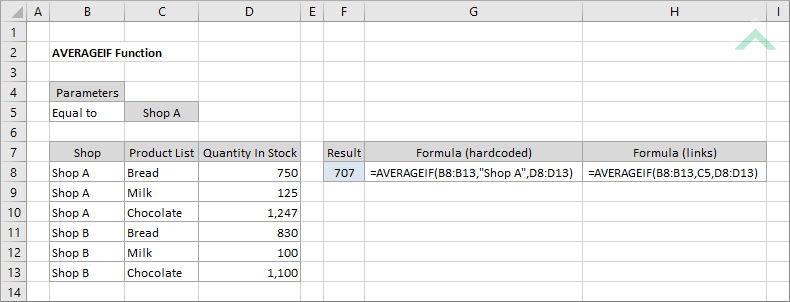Excel Formula Average If Error / Excel Formula How To Fix The Div 0 Error Exceljet - Providing you are using excel 2010 and above the aggregate function can be optioned to ignore all errors.
Returns a count of numbers based on given criteria. = average ( b5:d5 ) // returns 60 the result is 60, since (90+90+0)/ 3 = 60. Using averageif and setting the criteria to greater . If you want to ignoring any errors that might exist in the given range, you can use . We will be creating a countiif and if along with average formula in excel:

{=average(if(not(isna(e4:e10)),e4:e10))} it is an array formula.
In c5 i want to average the only negative numbers if its entered in b9:b29. So how to handle this in excel. If you want to ignoring any errors that might exist in the given range, you can use . Using averageif and setting the criteria to greater . In the example shown, the formula in e5 is based on the average function : If there is no negative number c5 should . Combining the average and iferror would only handle the error on the result of the average. Providing you are using excel 2010 and above the aggregate function can be optioned to ignore all errors. The averageif function can be used to calculate an average of some numeric values with one or more criteria. The microsoft excel averageif function returns the average (arithmetic mean). We will be creating a countiif and if along with average formula in excel: Let's see how this formula works: In general, the averageif function is used when a condition needs to be satisfied.
Providing you are using excel 2010 and above the aggregate function can be optioned to ignore all errors. Let's see how this formula works: {=average(if(not(isna(e4:e10)),e4:e10))} it is an array formula. Yet another option would be to use . The microsoft excel averageif function returns the average (arithmetic mean).

In the example shown, the formula in e5 is based on the average function :
The averageif function can be used to calculate an average of some numeric values with one or more criteria. If you want to ignoring any errors that might exist in the given range, you can use . = average ( b5:d5 ) // returns 60 the result is 60, since (90+90+0)/ 3 = 60. Yet another option would be to use . In c5 i want to average the only negative numbers if its entered in b9:b29. The microsoft excel averageif function returns the average (arithmetic mean). Let's see how this formula works: If there is no negative number c5 should . Returns a count of numbers based on given criteria. So how to handle this in excel. Thus by applying the formula and specifying condition as ">0" we avoid errors . Providing you are using excel 2010 and above the aggregate function can be optioned to ignore all errors. When you use the average function to calculate those cells, you will get an error result.
If there is no negative number c5 should . The averageif function can be entered as part of a formula in a cell of a . So how to handle this in excel. Let's see how this formula works: In the example shown, the formula in e5 is based on the average function :

So how to handle this in excel.
In c5 i want to average the only negative numbers if its entered in b9:b29. Let's see how this formula works: Thus by applying the formula and specifying condition as ">0" we avoid errors . If there is no negative number c5 should . I have this equation that ignores n/a errors: So how to handle this in excel. Using averageif and setting the criteria to greater . Returns a count of numbers based on given criteria. = average ( b5:d5 ) // returns 60 the result is 60, since (90+90+0)/ 3 = 60. When you use the average function to calculate those cells, you will get an error result. Combining the average and iferror would only handle the error on the result of the average. We will be creating a countiif and if along with average formula in excel: If you want to ignoring any errors that might exist in the given range, you can use .
Excel Formula Average If Error / Excel Formula How To Fix The Div 0 Error Exceljet - Providing you are using excel 2010 and above the aggregate function can be optioned to ignore all errors.. = average ( b5:d5 ) // returns 60 the result is 60, since (90+90+0)/ 3 = 60. In general, the averageif function is used when a condition needs to be satisfied. Returns a count of numbers based on given criteria. The averageif function can be entered as part of a formula in a cell of a . I have this equation that ignores n/a errors: